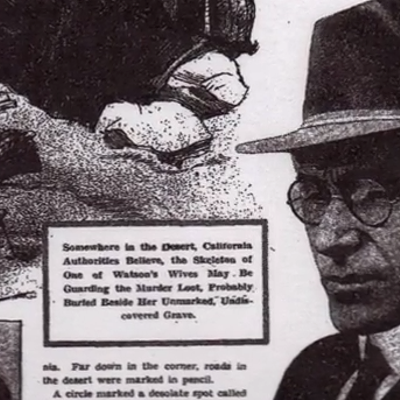For much of his life, Leno Prestini's work and art were intertwined with our region's signature brick-and-terra-cotta complex. J.H. Spear founded Washington Brick Company on Clayton's high-quality clay deposits in 1893, and the factory burned to the ground along with most of the town in 1908. By the time Leno's father Luigi arrived on the scene in 1911, Washington Brick, Lime and Sewer Pipe had emerged from the ashes and was establishing a reputation for its terra cotta sewer pipe and beautifully crafted decorative panels. Much of the work was produced by a community of Italian-American artisans based in Clayton. Under the direction of A.B. Fosseen and his son Neal, the company continued to supply a variety of fine brick and craftwork to buildings all over the Northwest for the next four decades.
Terra cotta, baked earth, is an ancient process that begins with a high-quality raw clay. At Clayton, the clay was dried and powdered, then mixed with pre-fired clay, or grog, to control shrinkage in the finished product. The pounded blend was then cured in a dark, cool basement. Scaled drawings of architectural details were shown to modelers who interpreted the figure in clay. If approved, a plaster mold was fashioned. Workers would then stuff the mold with the aged clay mix, pounding it in first with their fists, then with wetted cloth sacks full of clay. The piece would be turned out, trimmed, finished, dried and finally glazed before being placed in the kiln. After four or five days of firing at 2,000 degrees, the pieces were removed and cooled. Rejects were ground up for grout; keepers were chiseled to exact size, then stained and burnished by hand.
Leno Prestini's father Luigi worked as a chiseler of finished terra cotta pieces. His brother Battista worked as a finisher, staining and rubbing. Although Battista left Clayton in the late 1920s to work first at another brick plant in Tacoma, then at Douglas Aircraft in Los Angeles, the terra cotta experience hung in his mind. In his later years, he wrote meticulous descriptions of the brick-and-terra-cotta processes he learned in Clayton.
Leno himself began as a terra cotta apprentice in 1925 and stuck with it until he rose to the position of chief modeler. His styles in both terra cotta and painting were certainly influenced by Washington Brick modelers Frank Frey and Cecil Sater, who mentored him in the trade. By 1931, Leno was fashioning personal pieces alongside the sunbursts and floral patterns required by the architects. He modeled the Christmas tiles sent out as holiday cards by the A.B. Fosseen family in 1930s.
Neal Fosseen, the former president of Washington Brick and Lime (and later a Spokane city council member and mayor) still remembers the work Leno did in the '30s and the way he would slip his own handmade terra cotta — pieces such as "Two Fishermen in a Boat," currently on display at the MAC's Small Towns exhibit — into the kiln alongside regular orders. The realities of the Depression meant that when there were no jobs, Leno would be laid off to pursue whatever caught his fancy. But if there were orders to fill, Leno dependably resumed his post as head modeler. "Look," says Fosseen. "He was a terra cotta man."
Leno's storybook mural "Clay to Clay" lays out his town's symbiotic relationship with the terra cotta plant. Measuring four by 18 feet, the pictures begin with Mr. Spear augering a test hole in the fine reddish clay around Clayton at a time when chopping cordwood was about the only job in town. The terra cotta works appear in 1907. As the story moves to the right, Leno himself appears, young and jaunty, heading away from the smokestacks of a prosperous enterprise toward the big city of Spokane, in sight beyond the hills.
Framed by a massive chain that spans the mural, a man with split aspects of youth and age displays company accomplishments such as the friezework on the Paulsen Medical Center and the rams' heads of the Davenport Hotel addition. But an hourglass drips away the time, and by 1945 the workers look old and the buildings dilapidated. A likeness of fellow modeler Frank Frey cradles a bottle. Like so many of Leno's works, it's a story containing both triumph and pathos. And, as a part of Leno's legacy, the painting has taken on a life of its own. "Clay to Clay" was originally created on the wall of Matt's Tavern. In the mid-1950s, a runaway fire threatened Clayton's entire downtown. As the flames destroyed another Prestini mural that hung over the produce section of the local mercantile, anxious citizens rolled Clay to Clay up on an ax handle and carried it out of harm's way. A damaged portion has been restored, and the mural is presently on permanent display at the Old Schoolhouse Historical Society in Loon Lake.






















